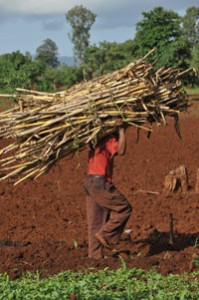Agricultural Innovations systems
 What is an innovation system and what does it do?
What is an innovation system and what does it do?
An innovation system is about people, the knowledge, technology, infrastructure and cultures they have created or learned, who they work with, and what new ideas they are experimenting with.
Over the years, the perspective on the role of agricultural research in development has shifted considerably. Moving from linear transfer-of-technology (ToT) models in the 1960s to ‘Farmer First’ and Farming Systems Research (1980s and 1990s) a current common perspective is that of Agricultural Innovation Systems (AIS).
Where research was once upheld as the main source of agricultural innovation, from an agricultural innovation systems perspective it is considered to be a “service” provided to farmers and other stakeholders in a wider innovation system. Research is seen as a process that supports experimentation, uptake and adaptation of new products, technologies, practices, knowledge (new varieties, new agronomic practices, new forms of organization). In playing this support role, researchers come in contact with several stakeholders, including farmers, traders, NGOs, etc.
Innovation is essentially the result of an interactive process between many actors. For our work, those are farmers, extension workers, researchers, seed companies, government officials and many others. Individual organizations rarely possess all the knowledge necessary for the whole process of innovation.
| An innovation system is therefore a network of organizations within an economic system that are directly involved in the creation, diffusion and use of scientific and technological knowledge, as well as the organizations responsible for the coordination and support of these processes.
Based on G. Dosi, ‘The Nature of the Innovative Process’. In: L. Soete, Technical Change and Economic Theory (Pinter Publishers, London, 1988, p222). |
Innovation systems do not follow a linear path that begins with research, moves through the processes of development, design and engineering, and production, and ends with the successful introduction of new products and processes. Rather, they tends involve continuous feedback loops between the different stages.
The actors we are engaged with focus on bringing new products, new processes, new policies, and new forms of organization into economic use. In their attempts to bring about change in agriculture, these multiple stakeholders are all part of what may be seen as agricultural innovation systems (AIS).
